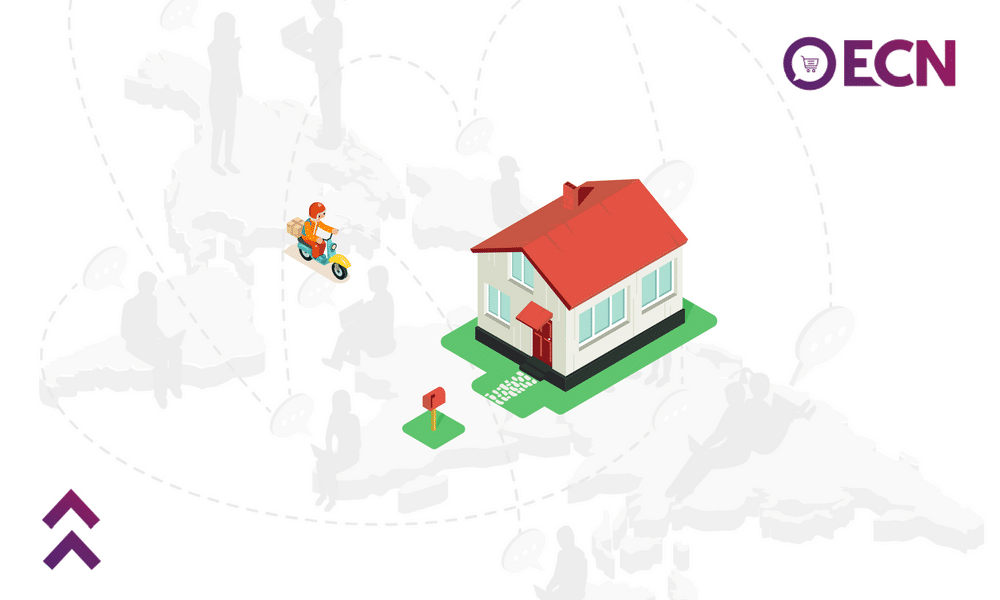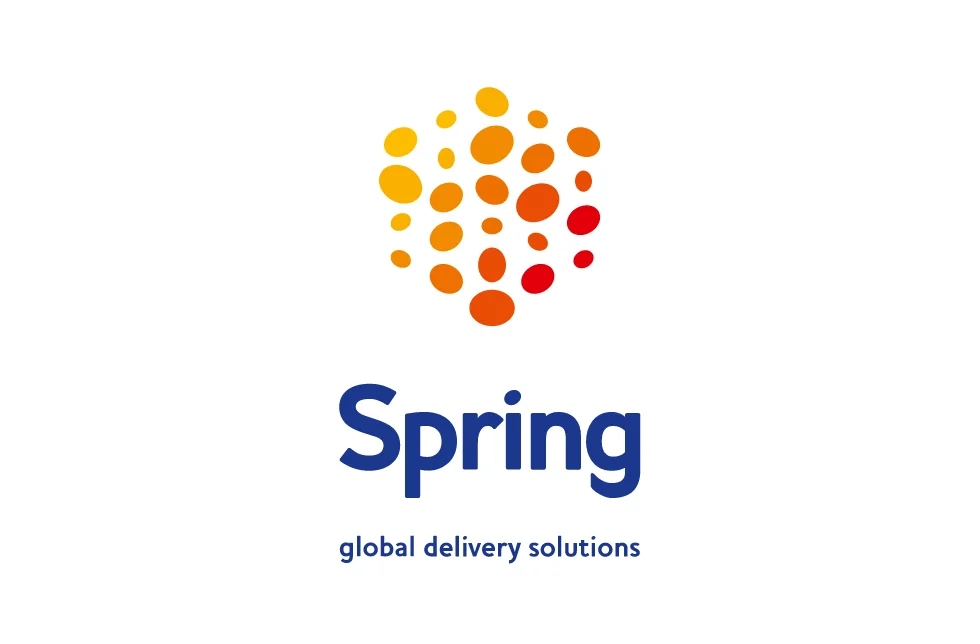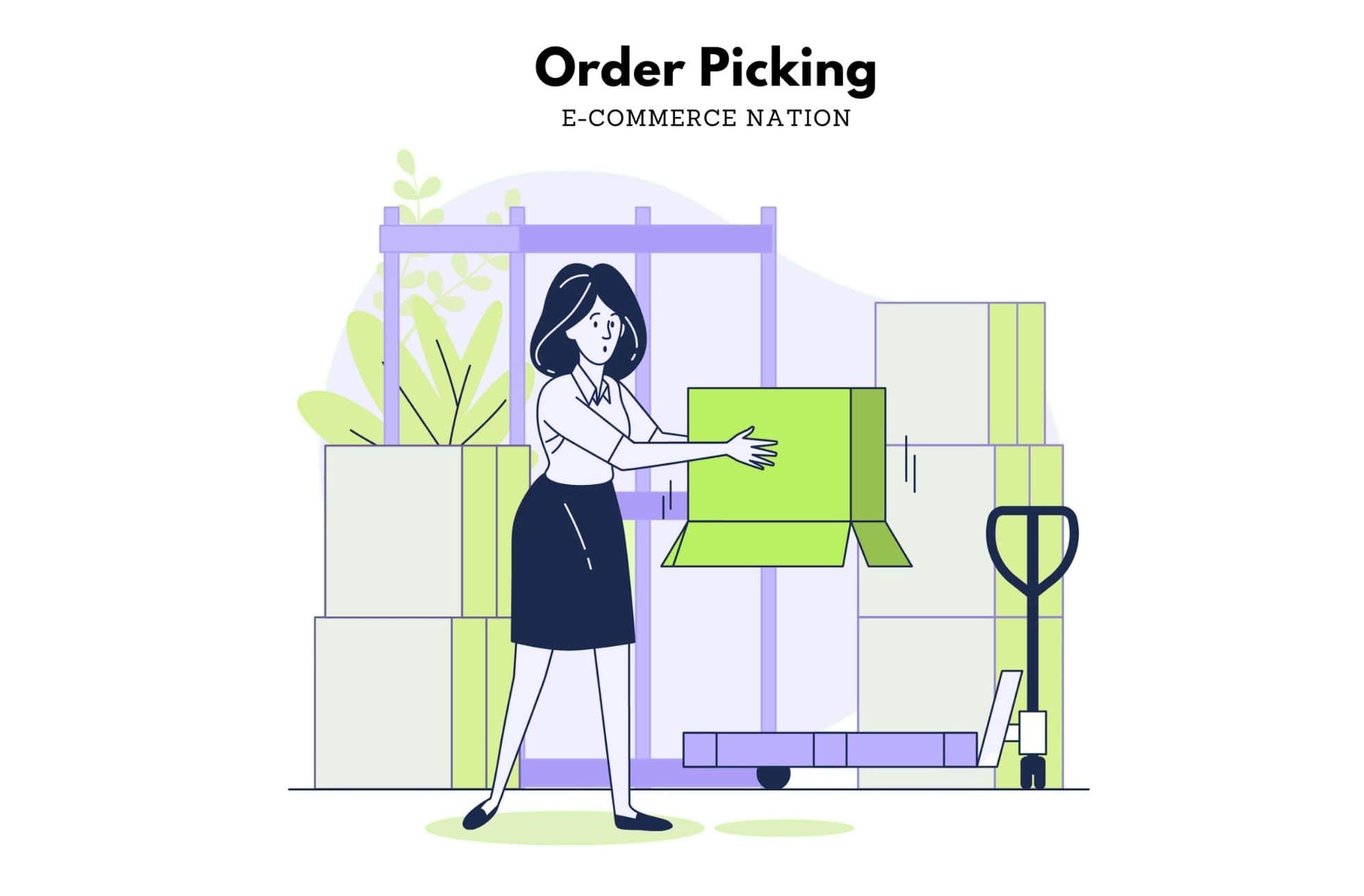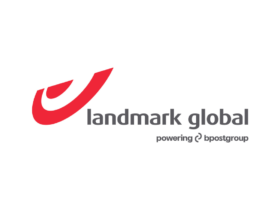Let me make an assumption about your online purchasing habits. I am willing to bet that in the past few months you have made at least one purchase from mega-platform Amazon.com. You may also be one of 90 million people in the US who have an Amazon Prime account. If this is the case, you’re expected to offer fast and affordable delivery, within two days and for free.
If you have an online store of your own, how does your shipping experience compare to Amazon Prime? With 63% of Amazon customers having a Prime membership, the odds of your customers already being accustomed to two-day shipping are high. If they are not already expecting an Amazon-like experience from your brand, they likely will in the near future.
Slow shipping can cost retailers both revenue and customers, with 73% of shoppers today expecting affordable, fast deliveries. Another study found that 54% of shoppers in the US have abandoned an order because delivery was too expensive, and 24% of shoppers have canceled an order due to slow delivery speeds. So how do you offer free two-day shipping without breaking the bank?
I will share this secret, which boils down to two main factors: the location of your fulfillment centers (from which you warehouse inventory and ship your online orders) and using powerful software to automate the process. I believe by following the strategy outlined below, any e-commerce brand – irrespective of their size – can provide the shipping speed their customers crave at an affordable price.
How to provide affordable two-day delivery to customers
Leverage multiple fulfillment center locations
One of the most important factors in choosing a fulfillment center location is to analyze where your customers are shipping to. Unlike a traditional retail store, the beauty of having a digital store is that you can market to anyone without the physical constraint of being in the same city as them. However, this also means that if all of your inventory is at one fulfillment center location – let’s say that it is in New Jersey – it can take anywhere from 5-6 days to deliver an order to a customer in Oregon, as seen in the estimate below.
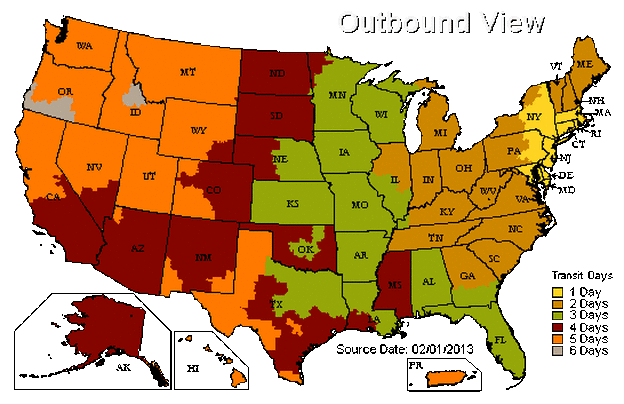
However, if you have products in multiple fulfillment centers located near your customers, you can reduce the time in transit.
So, how should you choose your fulfillment center location(s) in order to provide fast and affordable delivery?
When you look at the United States, the majority of the population lives in large cities and metro areas. If your inventory is located in or near these cities, it will get delivered to your customers there faster. Alternatively, if you’re fulfilling orders from remote areas, there will be a delay in delivery since only a small percentage of your customers will be within the immediate vicinity.
The best way to determine where to distribute your inventory and where to provide affordable delivery is by analyzing your sales data. Where are your products being shipped? Which products are being shipped to certain areas? Breaking this down shows not only where your customers reside, but also how you should optimize and allocate inventory accordingly.
How does location affect shipping?
If you’re only using one location to fulfill orders and you also offer two-day shipping, most customers who want their order delivered quickly will have to pay the price. This is because expedited options typically require air shipping instead of ground, and air is much more expensive. If you use multiple fulfillment centers, you can provide two-day delivery (or faster) via ground to more customers.
As you might guess intuitively, it costs more to ship a package 2,000 miles than 200 miles. This is also how shipping zones work. Shipping carriers like USPS, UPS, and FedEx measure the distance from the mailer’s location to the receiver’s location. As the distance increases, the zone number increases – from one through eight – as do the postage rates and fuel surcharges. Look at the maps of the continental United States below. The legend shows the colors of each shipping zone. The dark green represents the zone that is the closest and cheapest to ship to. As the zones increase, the areas on the map move from green to orange to darker shades of red.
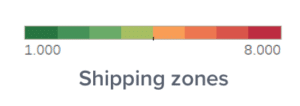
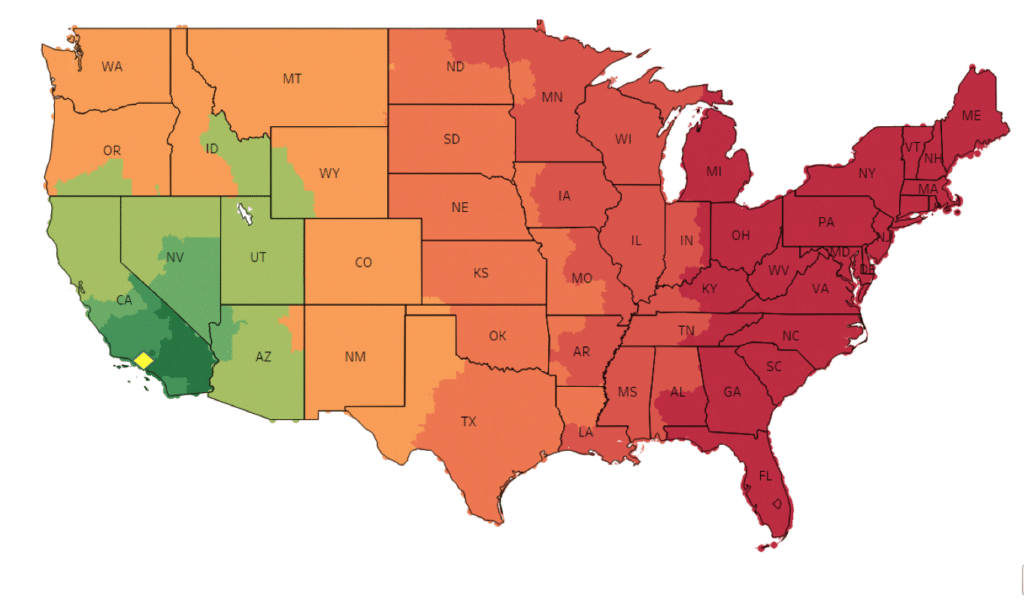
When using one fulfillment center (in Los Angeles, California, as indicated by the yellow dot on the map above), we see one region of the country is green, where you can provide affordable delivery, yet a much larger portion of the country is red. If you’re shipping to any of the dark red areas, the shipping rates will be higher, since it will go to Zone 8.
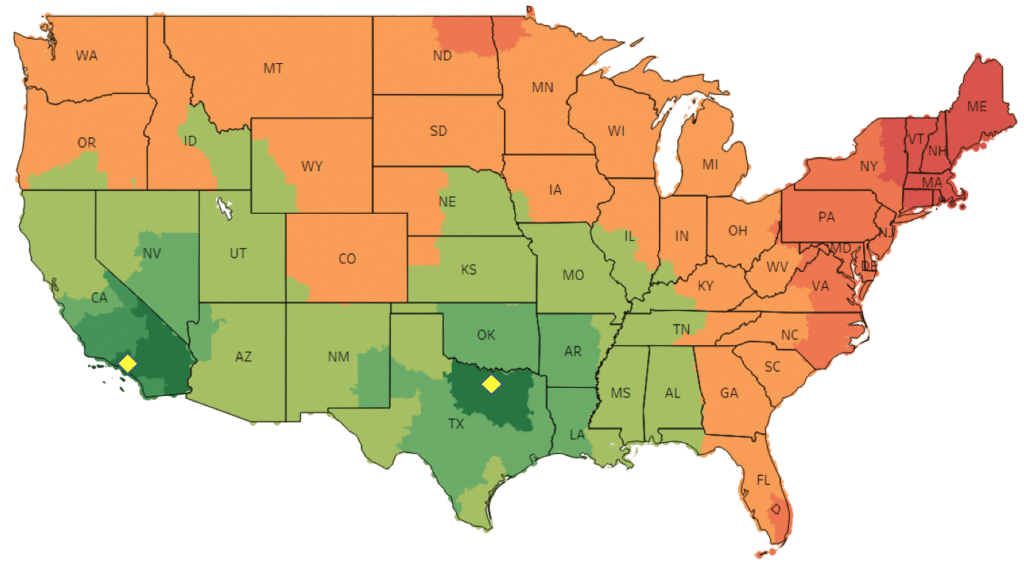
When we add a second fulfillment center (in Dallas, Texas, as indicated by the new yellow dot on the map above), we see the green areas now cover more ground. We have also eliminated Zone 8 entirely and only have a few states that would now be in Zone 7.
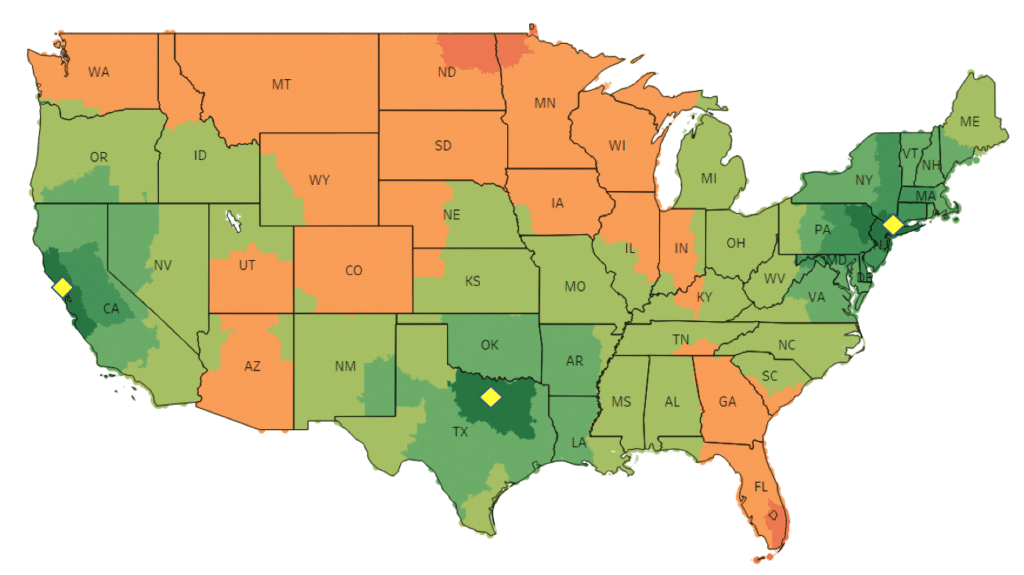
Finally, adding a third fulfillment center (in Brooklyn, New York, as indicated by the third and final yellow dot on the map above) further increases the regions that are included in the green shipping zones. We’ve also eliminated any states in the continental United States that would be in Zones 7 and up, leaving only a couple of areas that are in Zone 6. If your customers are located throughout the US, these fulfillment center locations provide a lot of coverage, including in highly populated states (California, Texas, New York, and more).
As you can see from the chart below, the higher the zone, the greater the shipping cost. This example uses a 20 lb. box with the dimensions, 4 x 9 x 12 inches. If you can keep the zone lower, it will be a more manageable cost for you and your customers.

What considerations are there for distributing inventory?
While this model of distributed inventory provides many benefits for e-commerce brands, it’s not necessarily the right fit for everyone. For example, if all of your shipments weigh less than a pound, you won’t see much costs savings, because these can ship for a flat price across the entire country, regardless of the zone they are being shipped to. However, for shipments over one pound, you will see a lower shipping cost if you ship from a fulfillment center located closer to the end customer, meaning that you can provide affordable delivery services to your clients.
Before deciding to distribute your inventory across a network of fulfillment centers, you will need to factor in the freight costs of distribution and the storage costs of having your inventory in multiple fulfillment centers. You must be able to demonstrate to your finance team that the upfront cost of utilizing multiple fulfillment centers is more than covered by the increase in online sales you get from offering reduced transit times and lower shipping costs.
You will also need to have a higher amount of inventory on-hand so that each location has an economic order quantity (EOQ) and safety stock available. One way to solve for this is by choosing to send only certain products (e.g., the most popular items or combination of products ordered together) to certain fulfillment centers. That way, you’re not paying as much for warehousing or sending all of your products to every location, meaning that you can afford applying an affordable delivery. If one fulfillment center happens to run out of a product, you will have the other locations to serve as backups.
Incorporate technology to automate the process of an affordable delivery
The second key to offering affordable two-day shipping is automating the order fulfillment process using powerful algorithms that route each order to the optimal fulfillment center. The best supply chain software solutions should be vertically integrated with not only your sales channels, but also your fulfillment centers. This way you have a single system of record to run your entire back-office operations. Once the order is shipped, the tracking information is synced back to your store where it can be communicated to your customer.
Bringing together orders, shipments, inventory levels, and customers across fulfillment centers and sales channels into one supply chain solution helps unify information that traditionally lives in silos. This allows you to analyze all the information from disparate sources on one platform. You can use this data to make better inventory decisions, reduce stockouts with improved order forecasting, and even improve the upstream activities of inventory purchasing and manufacturing.
Conclusion
Consumers today expect convenience and speed with their online orders. High shipping cost is one of the top reasons for shopping cart abandonment, which prevents you from acquiring more customers. If you can offer a quick turnaround time and an affordable delivery – without using expensive expedited shipping options – you should see an increase in conversions.
The good news for e-commerce merchants is they can offer customers the turnaround they’ve come to expect at competitive prices. The most cost-effective way to do this is automating fulfillment from strategically located fulfillment centers. By covering several geographic areas, you can reduce shipping zones for your customers to save time and money. Just make sure you have the right technology in place and integrations set up, so your sales channels automatically send every order to the most efficient fulfillment center.
What do you think about this article ? Let us know in the comments or on Twitter.

